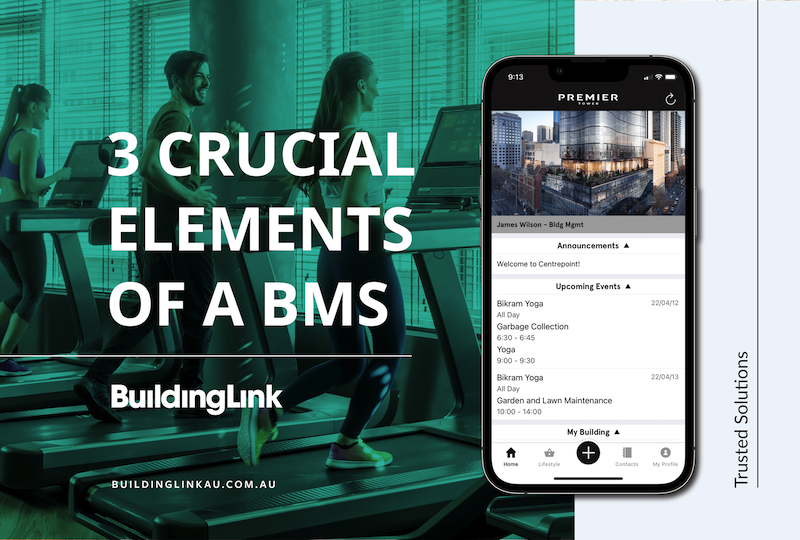A Building Management System (BMS) is sometimes referred to as a Building Automation System (BAS). Whatever you call it, it’s the software that helps to keep things in your building ticking along efficiently and effectively. There are several elements to a BMS and the best systems incorporate communication with the building’s users as well as managing the systems they rely upon.
Not all BMSs take care of everything a building needs. Some systems focus solely on tracking, automating and optimising systems like the HVAC, plumbing and electric. Others support the cleaning and maintenance schedule for facilities and assets within a building. A few BMSs, like BuildingLink, do all of this and streamline communication throughout a building.
While systems and asset management are important, we believe communication is the glue that holds everything together and enhances strata living. A one-trick pony BMS will leave critical parts of a building’s management to chance. That’s why we ensure our BMS covers the three crucial elements of building management.

Three crucial elements of a Building Management System (BMS)
The first element is the part of the building that gets little thought. Plumbing, electrical, security and HVAC systems in a building often run without too much thought from building users and residents. Until, of course, something goes wrong. A comprehensive BMS has processes in place that ensure these systems are checked and maintained regularly so things don’t go wrong. Some even use sensors to alert managers when things are wearing out.
Shared facilities such as conference rooms, gyms and pools are some of the features that draw residents to strata living. Along with these facilities, hallways, gardens and reception areas need maintenance. A BMS keeps track of maintenance and ensures a regular cycle of care is maintained, as well as recording and tracking unexpected issues if they arise so they can be resolved quickly. This could be regarded as the second element of a building management system’s function.
Finally, the day-to-day communications about building management and what’s happening in your building help people feel secure and part of the community they reside in. A comprehensive BMS takes care of communications. It can even be used to arrange community experiences such as introductory events, seasonal get-togethers, and themed evenings that build community cohesion.

Why a BMS matters
Without a BMS, procedures get forgotten and building management becomes reactive, or worse, the building can fall into disrepair. By monitoring the building’s systems and automating many of the processes, buildings run smoothly and cost less. That saves residents and creates safer, happier places to live.
It’s not just the systems and assets that matter though. The people that use buildings as places of work, their homes or hotel accommodation are just as important as the property. Creating a cohesive community takes clear and timely communication. When communication is transparent and easy, it brings people together and builds a community people are proud to be part of. A BMS with communication functions is an ideal tool to make this a reality.
A comprehensive BMS reduces costs, streamlines processes and adds value to the property as well as the community in that place. Each community is unique and deserves a BMS that will support and enhance that uniqueness. Get in touch with us today for a demonstration of how our BMS can enhance your community..
